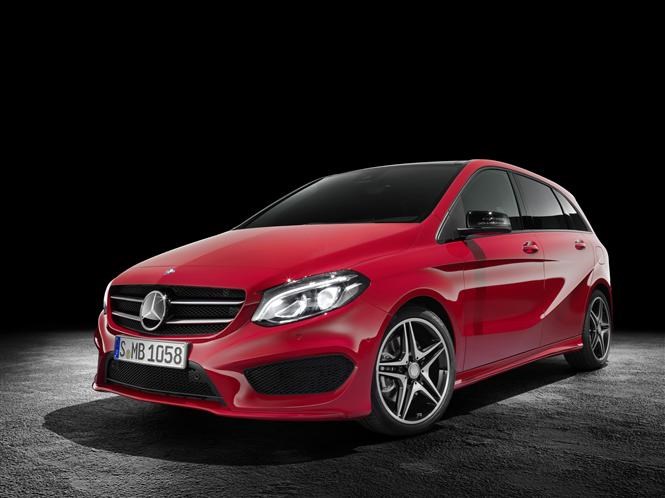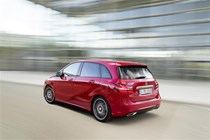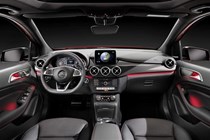Mercedes-Benz has unveiled the facelifted B–Class, hoping advancements in technology and a choice of efficient engines keep it ahead of rivals in the smaller people-carrier class. Along with minor design upgrades, four diesel and four petrol engines will be available, all returning fuel consumption figures typical of the class.
Increasingly popular, the diesel powerplant offerings will appeal to company car drivers; with the most economical B180 CDI Eco managing 78.5mpg and CO2 emissions of just 94g/km. Thus, company car buyers who choose this model will pay just 14 percent in Benefit-in-Kind taxation.
Mercedes has also reduced the CO2 emissions of the only four-wheel drive model, called B200 CDI 4MATIC, down to 130g/km. This makes the versatility and safety of owning a 4x4 considerably more affordable.
On the exterior, daytime running lights, a new bumper and a wider radiator grille differentiate old and new B-Class from the front. At the back, a chrome strip and contoured bumper are the notable changes, along with LED bi-colour rear lights. The interior has received a similarly minor update, with new technology and safety features where Mercedes has put the effort in.
One of the key changes to the updated interior is the larger eight-inch free-standing central display, to make use of Mercedes’ infotainment COMAND system easier than ever. The firm has also included now-ubiquitous mood lighting and a new instrument cluster. Keyless go is an optional extra, in line with other premium cars in the class such as the BMW 1 Series and Audi Q3.
The biggest technological roll-out is the inclusion of Mercedes’ Connect Me service – a feature set to appear on all of the marque’s cars. The system has a wide range of functions, and continues Mercedes’ crusade against the physical logbook with all servicing data now held in ‘the cloud’ – or online. The system can pre-heat or cool the car, and text you updates on the level of the fuel tank.
These innovations help place the C-Class as the most well-equipped premium car in its class, however it is likely other manufacturers will soon adopt such features as well. The Connect Me service also forms a key part of Mercedes’ commitment to safety along with new technologies to help prevent or mitigate the effect of collisions.
In the event of an incident, the B-Class’s Connect Me service automatically connects occupants of the car with Mercedes’ Emergency Call Centre. It can then send the position and condition of the vehicle direct to the emergency services. It’s interesting to note how manufacturers are now integrating this technology into their vehicles, technology that first appeared in the telematics boxes fitted by insurers.
The B-Class features Collision Prevent Assist Plus too; a new Mercedes feature to reduce the likelihood of a rear end collision by partially applying the brakes.
Mercedes also announced the new B-Class Electric Drive, to go on sale next year. The car will be all electric, powered by a bank of lithium-ion batteries located under the seats. Mercedes claims that the car will not lose any of its cabin space as a result, and believes it will be a very popular option for Motability users. The price – and crucially range – of the electric B-Class is still to be confirmed.
It’s clear that Mercedes wants to remain at the premium end of this sector. The level of equipment now included as standard puts it at the top end of the class, certainly above the Audi Q3 before an options list is looked at. In addition, the range of economical engines should cement the car’s popularity with company car drivers.
Read the full Mercedes-Benz B-Class review here.
Just so you know, we may receive a commission or other compensation from the links on this website - read why you should trust us.










